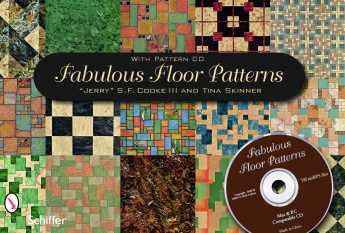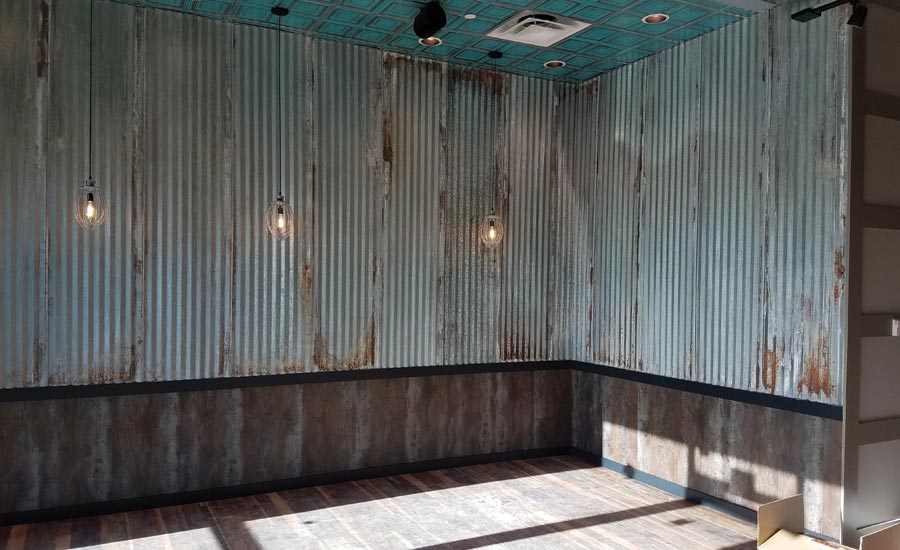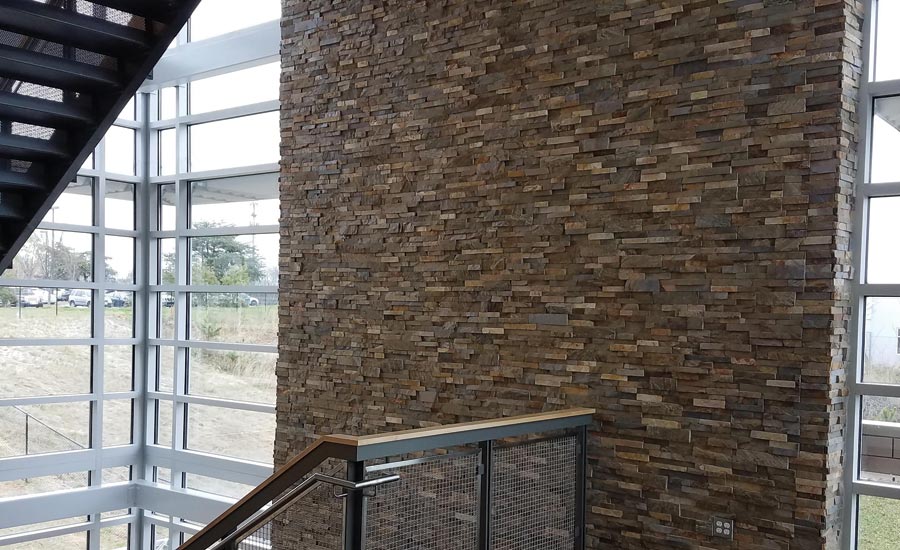Wall Cladding with Flooring Material






When asked what I do for a living, I simplify what I tell people by saying I am in flooring sales. Only those in the industry know this is an absurd understatement. There is a tremendous amount of other titles rolled into the term “flooring sales.” For instance, no one really talks about the amount of wall cladding we still consider “flooring.” I suppose flooring sounds better than “walling.” Or perhaps it’s because we use so many of the same products on walls that we use on floors. Regardless, many flooring companies have broadened their business and market share by including wall cladding as an inherent part of their business. Actually, this has been going on for decades. I mean, who can forget the shag carpet on the walls of the local skating rink growing up? I’m sure that was put there by the flooring company at the time. There are many options that can be sensibly integrated into a flooring company’s repertoire.
There are many types of products a flooring company may use on the interior walls of a building. Hard tile, the most obvious option, is installed on countless shower walls or tub surrounds. It may also be used for accent walls in a commercial building or any number of applications.
Recently, I wrote an article on thin brick installation, which is an easy jump from hard tile. Thin rock panels are another avenue not far from the hard tile family. We’ve probably all seen a wood plank accent wall or the felt carpet on the walls of a movie theater. One of the more modern approaches is applying vinyl tile or plank to the walls. There is a new café chain in our area that is specifying a vinyl tile as a wainscot around the perimeter of the restaurant walls. It is becoming so common that one of our local flooring distributors has started carrying a line of lightweight vinyl plank specifically designed for applying to walls along with added acoustical and fire-rated properties.
At tile tradeshows, you can’t go without seeing thin panel tile on the walls of nearly every vendor booth. While very beautiful, it’s not as prevalent as manufacturers would like it to be due to the high cost of materials and installation.
Another uncommon option is solid vinyl wall panels. We’re seeing this combined with a sheet vinyl floor installation in commercial kitchens, hospital operating rooms, or clean rooms. This system works seamlessly with the flooring to allow the area to be washed down or cleaned easily while also enduring a fair amount of abuse. It is important to note, systems such as thin panel tiles or solid vinyl wall panels will require some initial investment in the proper tools and must have a trained installer. These are not as simple as installing wood or vinyl tiles to a wall.
Installing wall cladding presents its own set of challenges. Some are more obvious such as wall flatness. Not unlike floor flatness, once something is installed on top of it, we have then accepted that substrate. However, when the general contractor knows a wall is receiving cladding, they must hold the walls to new standards. The statement, “you knew it was wood frame construction when you bid it,” is not acceptable. My response would be, “you knew that wall was supposed to receive 4’x 8’ thin panel tile that does not bend to your studs.” The general contractor will need to make sure the framing and drywall contractors are preparing the walls correctly instead of trying to put that responsibility on you, a salesperson.
One of the other key factors in wall cladding is to make sure permanent lighting is in place prior to installation. This is a hard lesson learned that is inevitable. Shadows cast from the permanent lighting will be totally different than those few temporary lights hanging around during construction. The painter will also need to know which walls receive cladding to keep from painting those walls. This can create a bonding issue with most wall cladding products, and some will even ask the drywall contractor to neglect fully mudding all the joints.
Whatever wall cladding product you are contemplating incorporating into your flooring company’s offerings, make certain you know the proper application procedures. Educate your general contractor on substrate prep, flatness, and lighting requirements prior to that substrate being applied to the studs. This will save a difficult conversation down the road, much like in flooring. Don’t be afraid to venture out into the walling business.
Looking for a reprint of this article?
From high-res PDFs to custom plaques, order your copy today!











